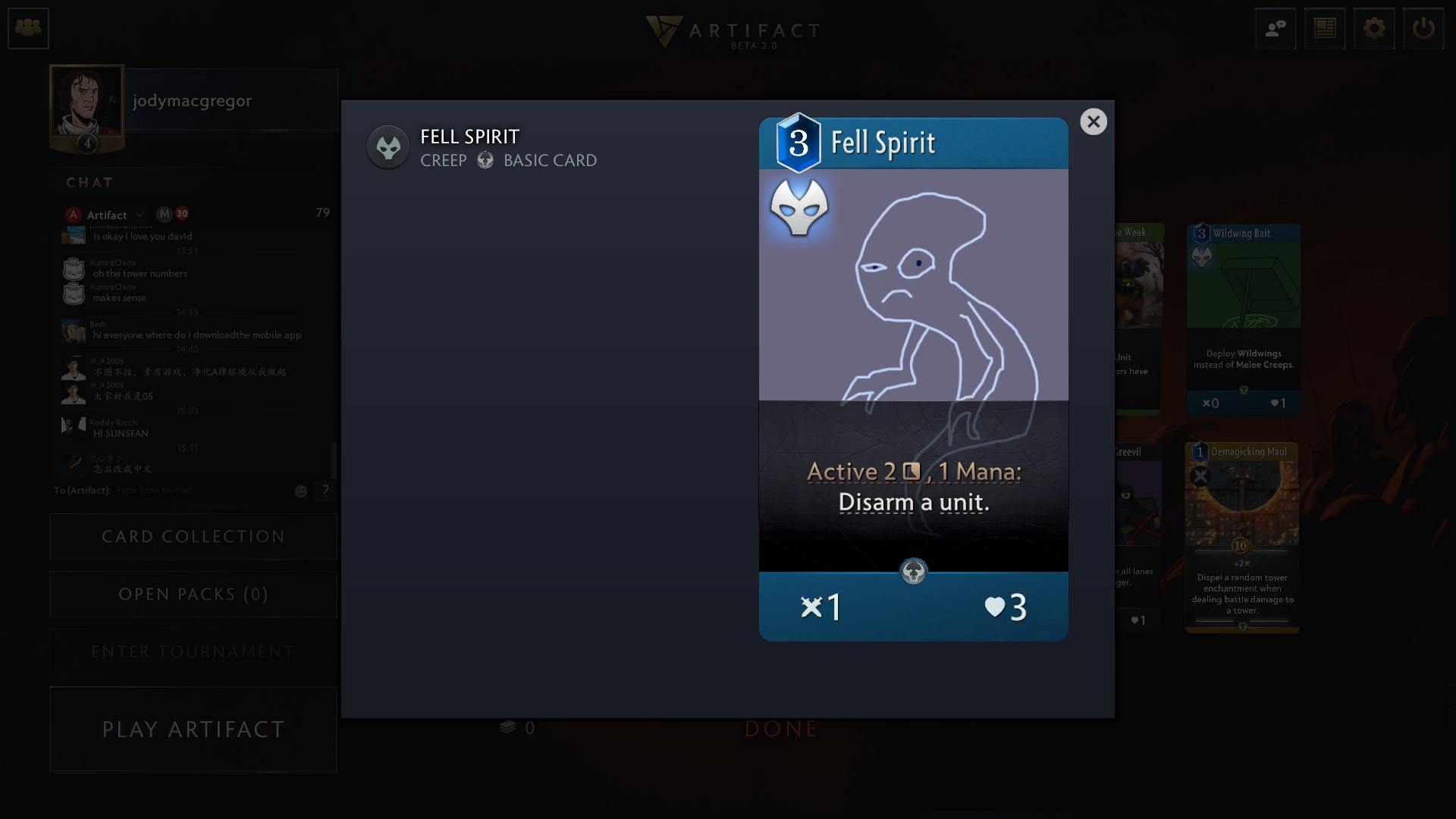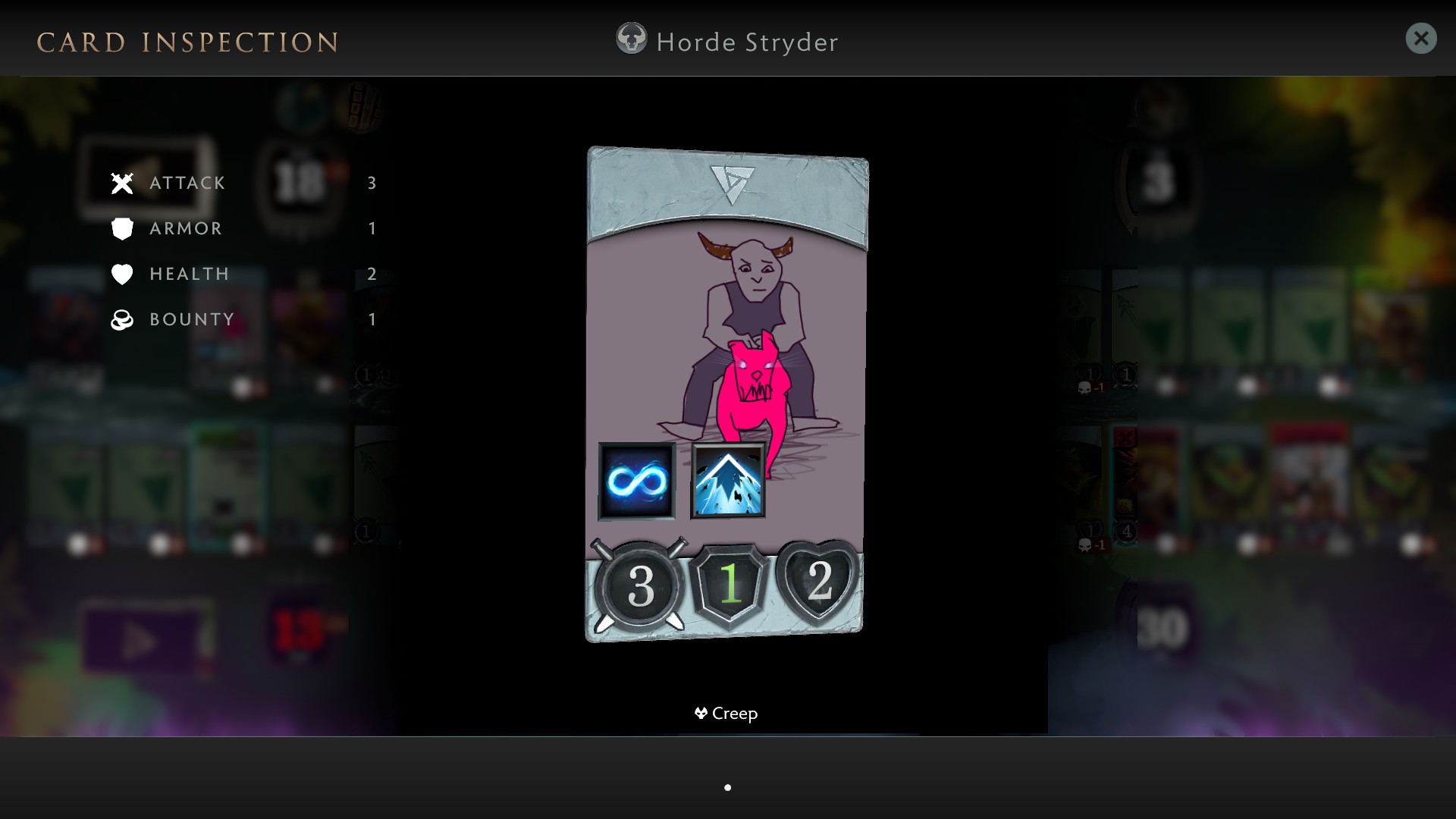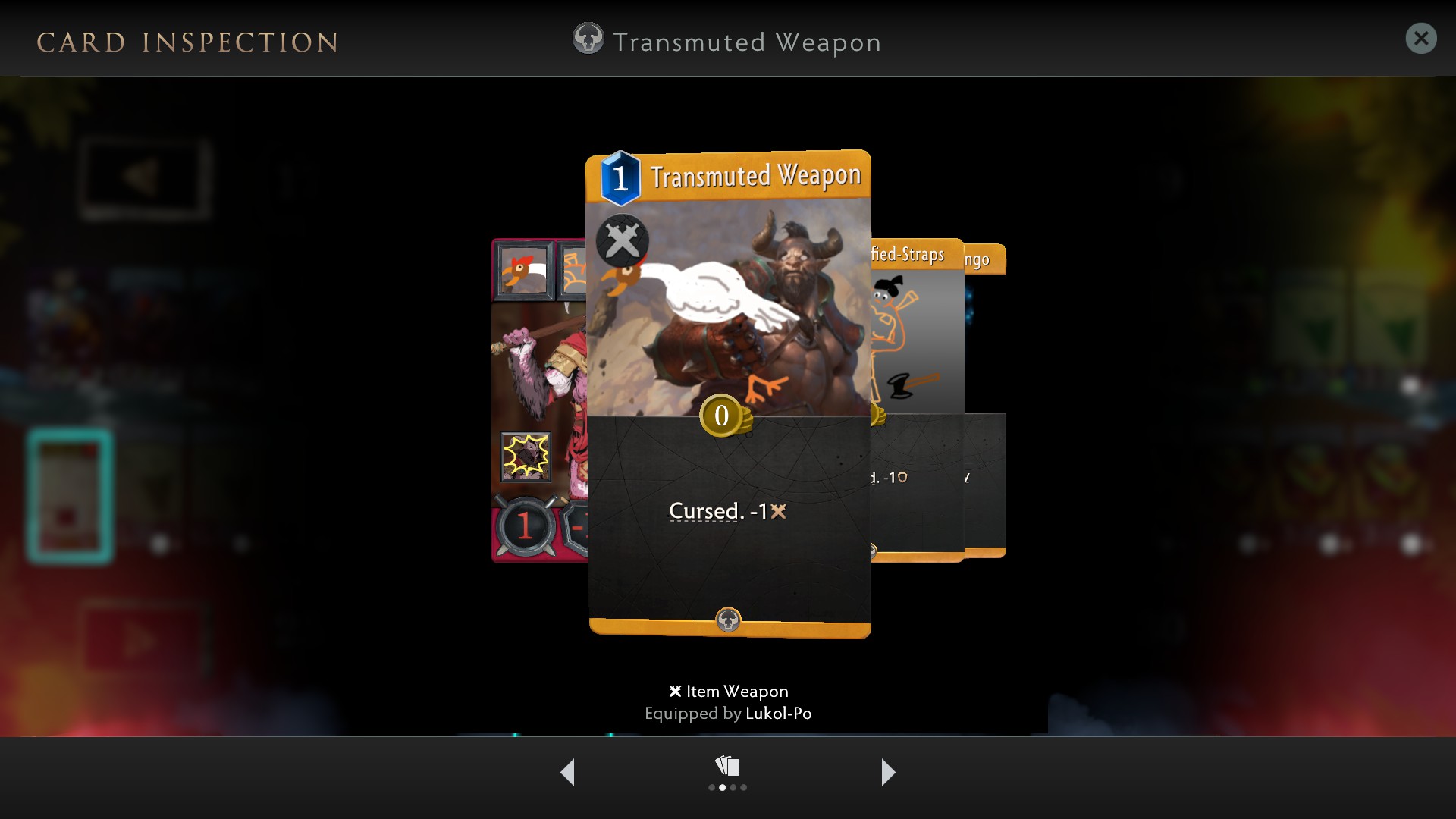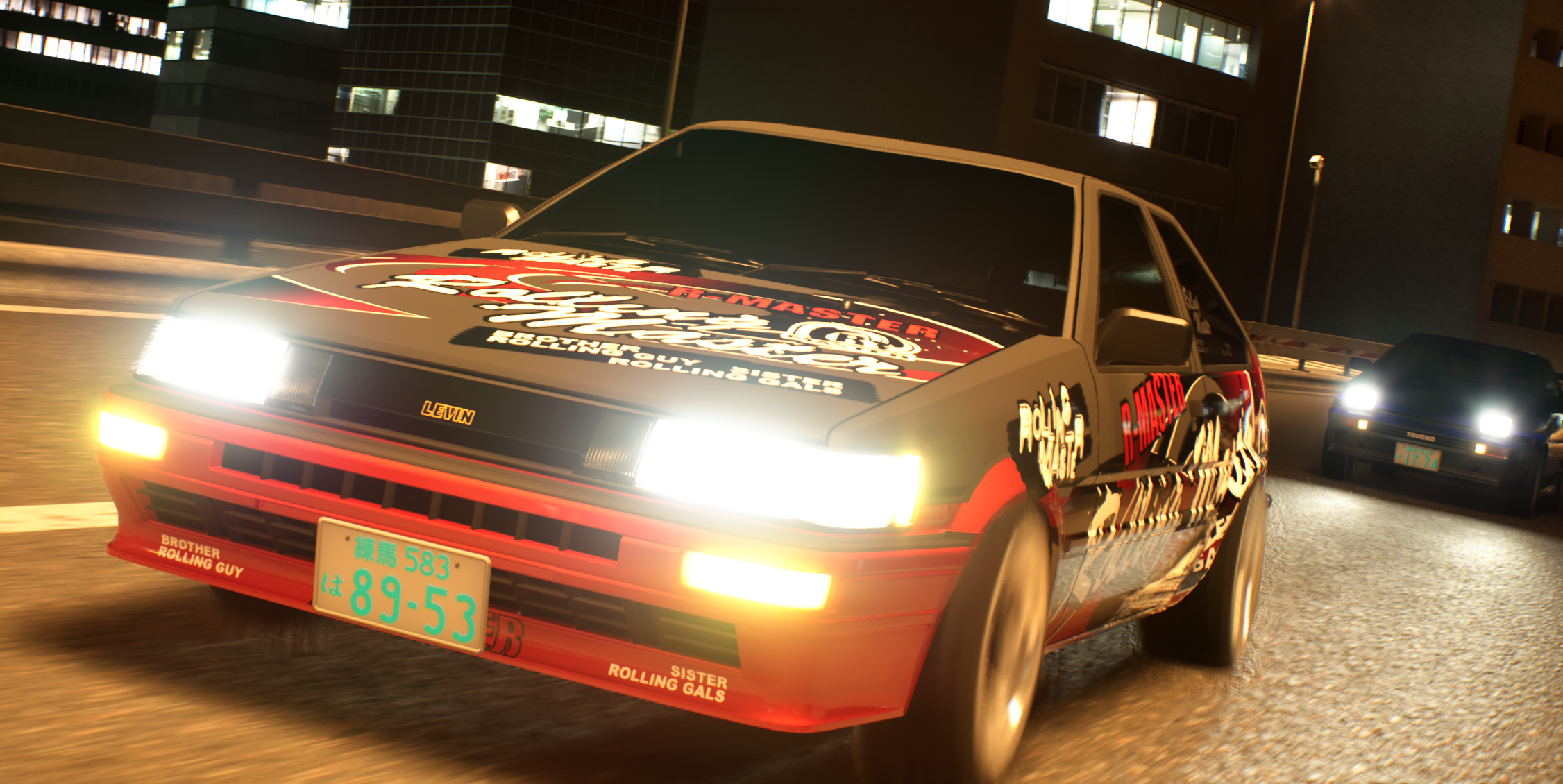Artifact 2.0 is less complicated, but is it a better game?
Notes from the beta.
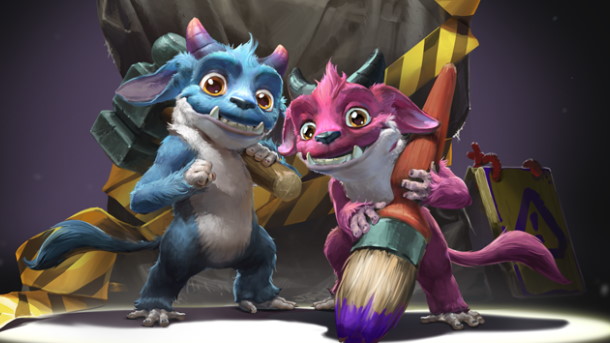
The first thing you should know about Artifact 2.0 is that, like Diablo 3's auction house, its market has been sent wherever videogame economies go when they die. It has ceased to be. It's an ex-market. Instead of buying and selling cards, you unlock them through play. Some of the singleplayer campaign missions gift you two cards on completion, and when you earn enough experience points to level up you get a free pack. We're waiting to see what the inevitable cosmetics and battle pass will look like (hats for cards?) but it's been confirmed that when 1.0 is retired, you won't be able to buy Artifact cards any more.
Back in March of last year Valve said that rather than continue updating Artifact piecemeal they'd need to go back to the drawing board for, as programmer Jeep Barnett put it, "a significant amount of time." The current closed beta might last a further six to 18 months. As the charmingly amateurish MS Paint placeholder art for new cards suggests, this is still early days. In the couple of weeks I've been dabbling in the beta, stuff as fundamental as "how many cards do you draw per turn" has been subject to change.
When Artifact 2.0 comes out of beta it may look entirely different again, though there's a part of me that hopes the goofy-looking art for Fell Spirit sticks around.
Three-Lane Highway
In terms of how it plays, the biggest difference is the lanes. Artifact's three lanes were previously separate screens you switched between, but now all three have been squeezed into a single screen. Rather than each lane potentially containing an infinite number of cards, they're strictly limited to five each, and rather than separate mana pools for each you have one pool to spend playing cards into any of the three lanes.
This immediately removes one of the hurdles Artifact presented: to play well you had to keep three separate board states in your brain at once. You and your opponent would go back and forth playing cards in each lane before combat triggered across all three of them at once, by which point you'd have forgotten what was going on in lane one. In Artifact's current state there's still more happening than in certain other digital card games, but because it's all presented together it's easier to keep straight (especially if you're watching someone else play).
There's also more movement and interaction between lanes. Previously you had to hope for a blink dagger or kill your own heroes to replay them elsewhere on a later turn—a counterintuitive tactic that was a significant part of Artifact's strategy. Now when you destroy an enemy tower you're rewarded with a blink scroll that can teleport a hero for zero mana. Hero abilities like Timbersaw's chainsaw-hop also allow for movement (every hero has at least one ability now), and overall there's more interaction between the lanes. They don't look like separate games any more, and they don't feel like them either.
Another big change is the absence of arrows. One of Artifact's most contentious ideas was that each space on its board would randomly be assigned an attack direction, shown as an arrow, each turn—either left, right, or straight ahead. At the start of a turn you didn't know if a unit was going to attack the gap ahead of it and damage the tower, or uselessly veer left to overkill a creep. It complicated things but didn't make the decisions any more interesting, which was Artifact's original design all over.
Keep up to date with the most important stories and the best deals, as picked by the PC Gamer team.
Now everyone attacks forward by default, though they can be forced to change target by keywords like taunt. It takes a little of the randomness out, which is a blessing. Obviously games with card draw are always going to have some randomness, but Artifact 1.0 felt like it piled on unpredictability after unpredictability for no good reason. Creeps are no longer randomly placed, either. Instead one pops into the leftmost free space in each lane each turn.
Along with lower numbers all round (most creeps have attack 1, defend 1) and an item shop that's been tweaked (it can be leveled up for better gear, a bit like in autobattlers) these differences all feel like improvements to me. They dilute Artifact's identity a little, but in the service of making it a game you can play or watch without feeling like you need an aspirin after.
A la modes
Right now every card is unlocked in constructed mode, but you can only play it by challenging people on your friends list. The focus of the beta at the moment is instead on a new mode called Hero Draft.
Instead of opening packs and building a deck as you go, players take turns choosing heroes from a random selection. Once you both have six heroes you're given a deck of cards chosen to suit those heroes. It's a much faster and more newbie-friendly way of playing draft than having to open packs and select the best cards out of them, but it does highlight a relative lack of synergy compared to something like Magic: The Gathering Arena. Random decks in Magic can still present you with wild combo possibilities, but in Artifact that doesn't happen often.
It's not that you can't do ridiculous stuff. For instance, Double Edge gives a red hero +6 attack and -6 armor, which is risky. It pays off when combined with Tusk's walrus punch ability, which doubles his attack, to make him straight-up devastating. But that's a red spell being played on a red hero. Cross-color combos that are more difficult to pull off should be the surprising ones, and at the moment they're not. That could change as cards are rebalanced.
Though it doesn't have a tutorial yet (the beta is aimed at experienced players), Artifact 2.0 has most of a singleplayer campaign, eight out of its 10 levels being currently playable. They tell the story of an army, um, fighting some nobles? The problem with Artifact using Dota 2's cast of Warcraft body doubles is that it's impossible to care about any of them if you don't have 2,000 hours in the MOBA. When my cards started talking to each other before the final battle I didn't have a clue who any of them were or why I should care.
I like that my decks in The Elder Scrolls: Legends can have Aela the Huntress and Haskill in them, but I'll never feel the same about heroes like Axe or Drow Ranger.
I do like Artifact 2.0's singleplayer campaign, though. Mostly I like that it exists. When nobody's awake in your timezone or you want to practice without just queuing up another bot match, a robust singleplayer mode is invaluable. It's one of the reasons Faeria was my card game of choice for a while.
Most of the missions are nothing special, until the campaign suddenly kicks into gear at its end. After cakewalking through everything prior, the finale took me four goes to win (though it has been rebalanced in a subsequent patch). Creeps fill all the empty spaces each turn, meaning you need to clear room before combat to actually cause damage to the towers, or use effects that bypass them. Your opponent's adept at exactly that, especially with ladders that give your units the "feeble" keyword, meaning any excess damage done to them carries over to the tower they're defending. The AI kept playing that in the left lane, where I was only allowed to play my solitary green hero, severely limiting my options. It was an actual challenging puzzle.
After the campaign you unlock more levels like that—one that limits you to casting spells your opponent has used against you and another called The Hunger where playing cards over existing units devours them, adding their stats to yours, which proves vital because the enemy towers are all armored and have more hit points than yours.
Playing these singleplayer matches hands out XP just like multiplayer, which means I was regularly opening new packs. The fact that Artifact 1.0 had no leveling up was seen as a positive when it launched—there was an honesty to the way it didn't manipulate you with hundreds of experience points and bars filling up and log-in rewards—but it turns out I am happy to be manipulated because I'm simple and enjoy watching a number be replaced by a bigger number.
Wrapping up
There are other changes in Artifact 2.0: Being able to watch replays, changes to card draw (there's a hand limit now with excess cards going into an "overdraw deck" that seems like a way of punishing high-tempo play, which I suspect is one patch away from being rethought), but let's not get lost in the weeds. The main difference is that Artifact 2.0 feels snappier. Because you don't have to keep a queue of stuff in the back of your mind while waiting for three screens of individual cardplay to complete, it's less headache-inducing both to watch and to play.
Reducing some of the pointless complexity opens Artifact up for an increase in meaningful complexity where it would actually matter. Yet right now, it feels like straightforward aggro play is the way to go, with control decks lacking finishers and combo synergy seeming rare. When I open a pack of Magic cards I immediately get an idea for using them in a deck, which hasn't happened in Artifact. Here, they feel a bit nebulous and often standalone.
I can't help but compare Artifact to Magic, which seems like its real competitor—I'm not sure Artifact was ever really competing with Hearthstone. Hearthstone is a very effective machine for churning out jaded ex-Hearthstone players who want something different and are fed up with whatever Blizzard's last alienating move was. Those people should be an ideal audience for Artifact, except now they have Legends of Runeterra to play, as well as all the previous competitors like Gwent and Shadowverse and so on. When Artifact 2.0 launches it may well be into an even more crowded genre than its first release.
Still, it's not like Valve hasn't turned a game's reputation around before. There's always a chance something like CS:GO's resurrection could happen again. Artifact's designers have made bold changes to parts of Artifact that seemed definitive, like the marketplace and three-screen layout, and I hope they mean to go on as they've begun.

Jody's first computer was a Commodore 64, so he remembers having to use a code wheel to play Pool of Radiance. A former music journalist who interviewed everyone from Giorgio Moroder to Trent Reznor, Jody also co-hosted Australia's first radio show about videogames, Zed Games. He's written for Rock Paper Shotgun, The Big Issue, GamesRadar, Zam, Glixel, Five Out of Ten Magazine, and Playboy.com, whose cheques with the bunny logo made for fun conversations at the bank. Jody's first article for PC Gamer was about the audio of Alien Isolation, published in 2015, and since then he's written about why Silent Hill belongs on PC, why Recettear: An Item Shop's Tale is the best fantasy shopkeeper tycoon game, and how weird Lost Ark can get. Jody edited PC Gamer Indie from 2017 to 2018, and he eventually lived up to his promise to play every Warhammer videogame.
